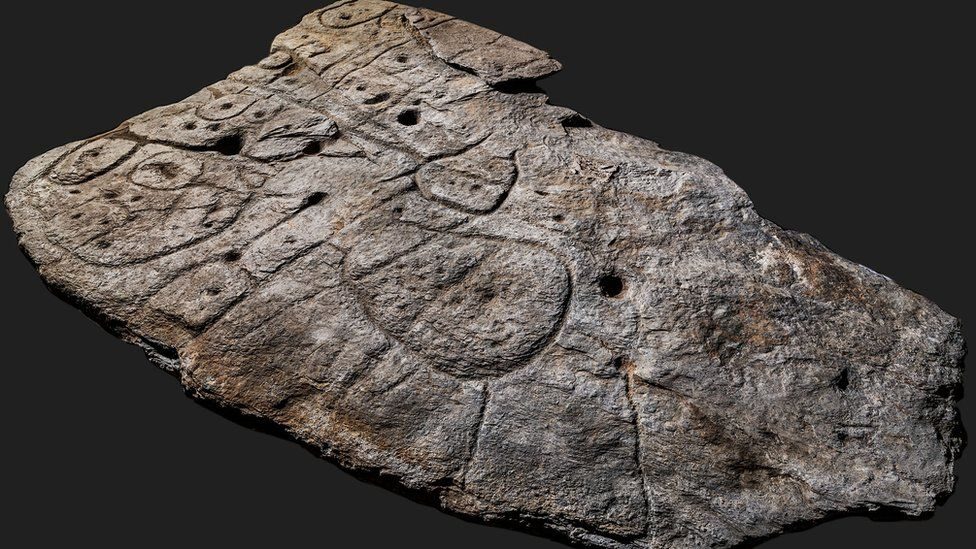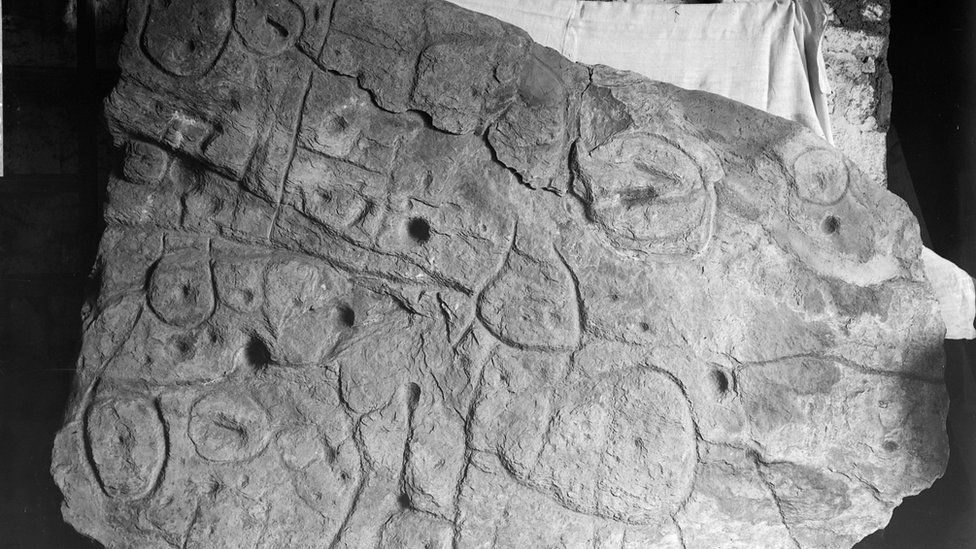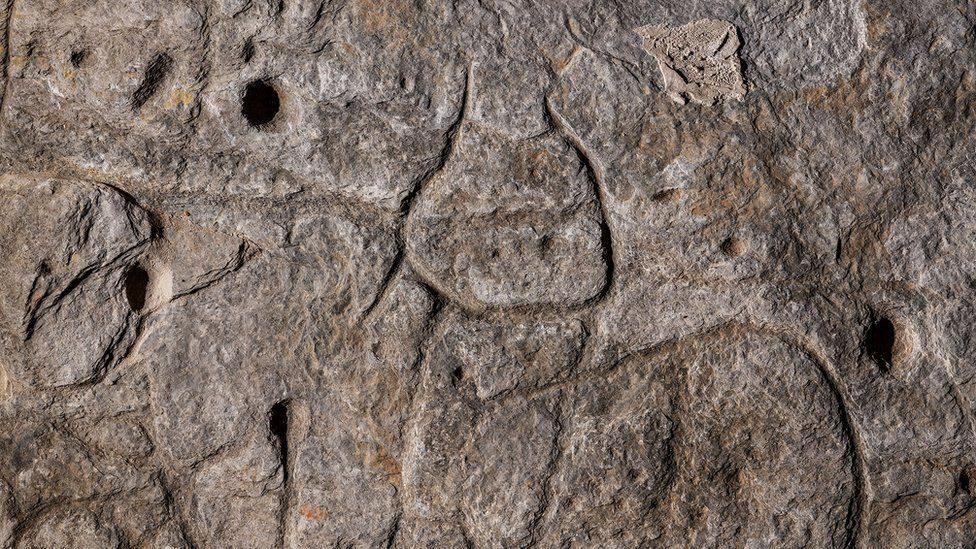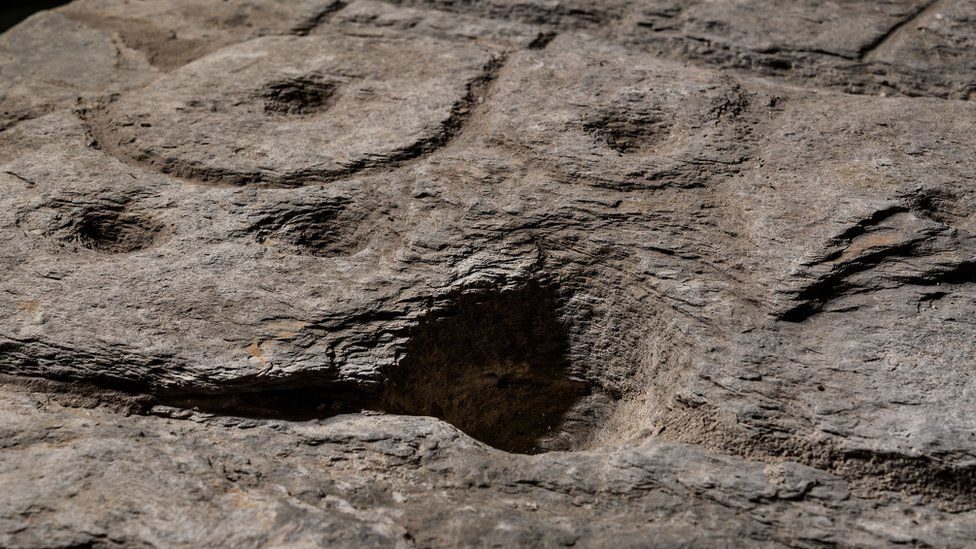
© DENIS GLIKSMANThe slab is covered in patterns of engravings
A freshly unearthed Bronze-Age stone may be the oldest three-dimensional map in Europe, researchers say.
The 2m by 1.5m slab (5ft by 6.5ft), first uncovered in 1900, was found again in a cellar in a castle in France in 2014.Archaeologists who studied patterns engraved on the 4,000-year-old stone say they believe the markings are a map of an area in western Brittany.
They say this makes the slab the oldest 3D map of a known area in Europe.

The slab was first discovered in Brittany in 1900.
The piece of rock, known as the Saint-Bélec Slab,
is believed to date from the early Bronze Age, between 1900 BC and 1650 BC.
It was first unearthed in 1900, during digs on
an prehistoric burial ground in Finistère, western Brittany, by local archaeologist Paul du Chatellier.
The slab was apparently forgotten for over a century, stored for decades under a moat at Mr du Chatellier's home, the Château de Kernuz.
But researchers hunting for the slab found it in a cellar in 2014.

© DENIS GLIKSMANMarkings on the rock are believed to depict an area of western Brittany
After analysing marks and engravings on the stone, the researchers suspected it could be a map.
The "presence of repeated motifs joined by lines" on its surface suggested it depicted an area of Finistère, a study in the Bulletin of the French Prehistoric Society said.
The researchers say the indentations are a 3D representation of the River Odet valley, while several lines appear to depict the area's river network.
Geo-location revealed the territory represented on the slab bears an 80% accuracy to an area around a 18 mile-long stretch of the river."This is probably the oldest map of a territory that has been identified," Dr Clément Nicolas from Bournemouth University, one of the study's authors, told the BBC.

© DENIS GLIKSMANThe "map" matches a a stretch of the River Odet valley
Dr Nicolas said the map may have been used to mark a particular area.
"It was probably a way to affirm the ownership of the territory by a small prince or king at the time," he said.
"We tend to underestimate the geographical knowledge of past societies. This slab is important as it highlights this cartographical knowledge."
this was clearly a prehistoric attempt at creating the first Tim Hortons brand, donuts, timbits, and just look at the shapes - these are instructions to the reader on how to roll up the 'rim.
3D map my ass.
maybe some cosmic event witnessed and recorded in clay tho' ?